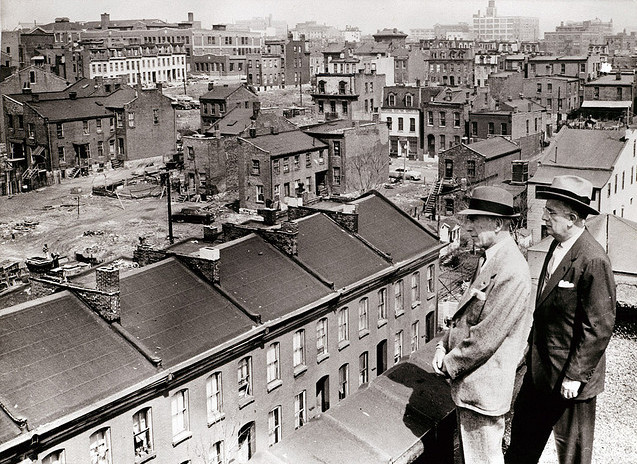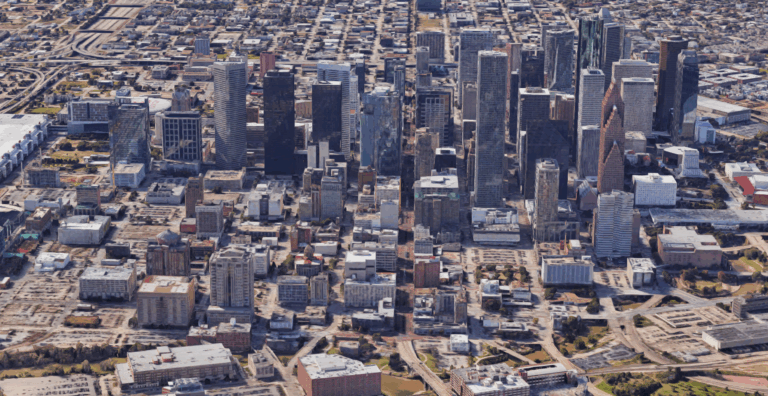Physical Address
304 North Cardinal St.
Dorchester Center, MA 02124
Physical Address
304 North Cardinal St.
Dorchester Center, MA 02124

Planners, like all professions, have their own useful mythologies. A popular one goes something like this: “Many years ago, us planners did naughty things. We pushed around the poor, demolished minority neighborhoods, and forced gentrification. But that’s all over today. Now we protect the disadvantaged against the vagaries of the unrestrained market.” The seasoned—which is to say, cynical—planner may knowingly roll her eyes at this story, but for the true believer, this story holds spiritual significance. By doing right today, the reasoning goes, planners are undoing the horrors of yesterday. This raises the question: are planners doing right today? That’s not at all clear. Just ask Hinga Mbogo. After emigrating from Kenya, Mr. Mbogo opened Hinga’s Automotive in East Dallas in 1986. Mr. Mbogo’s modest business is precisely the kind of thing cities need, providing a service for the community, taxes for the city, and blue-collar jobs. While perhaps not of the “creative class,” Mr. Mbogo and his small business represent the type of creative little plan that cities cultivate and depend on. Hinga’s Automotive has thrived for 19 years and looked primed for another 19. Unfortunately for Mr. Mbogo, Dallas planners had other plans. In 2005, the city rezoned the area to prohibit auto-related businesses. While rezonings—particularly upzonings—aren’t necessarily a bad thing, Dallas planners opted to force their vision through and implemented a controversial planning technique known as “amortization.” Normally when planners rezone an area, they allow existing uses that run afoul of the new code to continue operating indefinitely. These are known as “non-conforming uses” and they’re common in neighborhoods across the country, often taking the form of neighborhood groceries, restaurants, and small industrial shops. Yet under amortization, the government forces non-conforming uses to cease operating without any compensation. In the case of Hinga’s Automotive, this means […]

A metropolitan economy, if it is working well, is constantly transforming many poor people into middle-class people, many illiterates into skilled people, many greenhorns into competent citizens. … Cities don’t lure the middle class. They create it. – Jane Jacobs, The Death and Life of Great American Cities If you follow urban issues in the press, you might be forgiven for thinking that there are only three cities in America: San Francisco, New York, and Portland. All three are victims of their own success, as rising demand for housing has increased rents to unsustainable levels. Despite their best efforts, from rent control to inclusionary zoning mandates, middle- and lower-class households are increasingly forced to leave these cities as each progressively transforms into a playground of the rich. Yet there is a fourth city, a city which must not be named except to be derided as a sprawling, suburban hellscape. This fourth city has managed to balance a booming economy, explosive population growth, and affordable housing. This city has—as cities have for thousands of years—steadily grown denser, more walkable, and more attractive to low-income migrants seeking opportunity. This city is Houston, and it’s well past time for her to come out of the shadows. Explosive Economic Growth, Booming Population, Functioning Housing Market Before jumping into the nitty-gritty of how Houston has handled explosive growth in the demand for housing, it is worth first getting a handle on the magnitude of the challenge facing the city. When many people think of the Houston economy, they understandably think of large energy companies. Indeed, energy companies dominated Houston’s economy for much of the last century and continue to play a major role today. But in the years following the 1980s oil glut, Houston’s economy has been diversified in large part by startups and emerging small […]
1. Development blogger Roving Bandit criticizes UN-Habitat executive director Joan Clos for saying that Africa is “confronted with […] the challenge of preventing the formation of new slums.” I wonder if Clos thinks that the Lower East Side was born with yoga studios and Starbucks. 2. A kidney dialysis center in the Chestnut Hill neighborhood of Philadelphia wants to open in an abandoned industrial site, and when the City Council moved to overrule the local residents’ objections to the clinic staying open nine extra hours a week, they sued and called it an attack on democracy. The residents claim to want “peace and quiet,” which I guess you can’t get when you have people whose kidneys are failing all around you. Edit: Commenter Terry Nicol pointed me in the direction of this story earlier this year about a locally-owned Chestnut Hill grocery store that was threatened by a local resident for selling prepared food. 3. Yonah Freemark writes about Dallas’ new and extensive, but underperforming light rail network. Apparently the new lines were built along automobile corridors and bypass the densest parts of town entirely, and so the system functions more as a glorified park-and-ride rather than as an engine for infill growth. 4. Topher Matthews lays out his proposal for “performance parking” (i.e., charging market rates for street parking) in Georgetown. This is desperately needed in this very trendy and congested area – I remember one hairdresser on Wisconsin Ave. telling me about the convoluted game of hide-and-seek she played in order to park for free on the residential streets. Unfortunately, one DC Commissioner apparently believes that, even in one of DC’s most walkable neighborhoods, parking minimums are necessary: “This is an office building. There’s no Metro, people are going to drive.” 5. Apparently satellite photos show that the […]